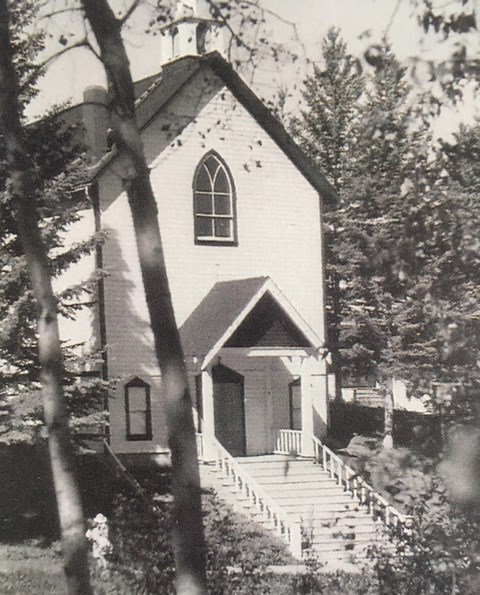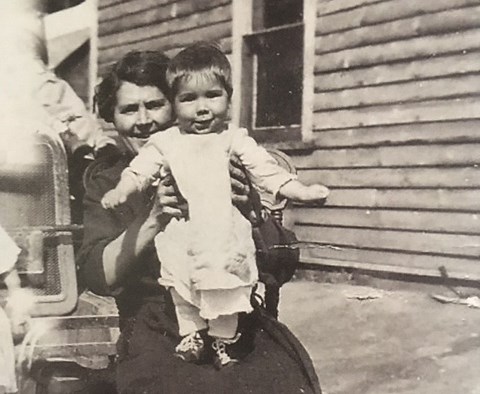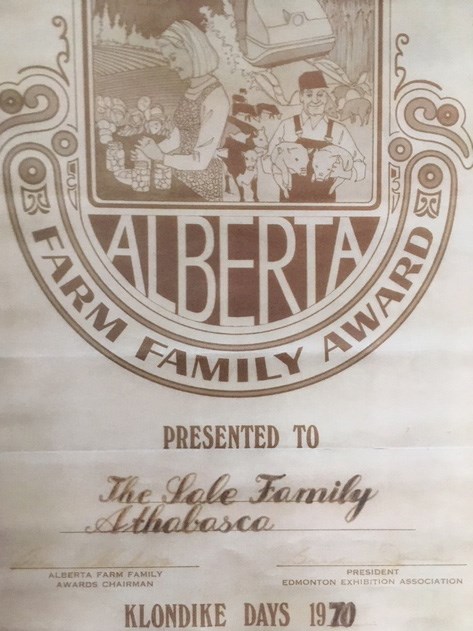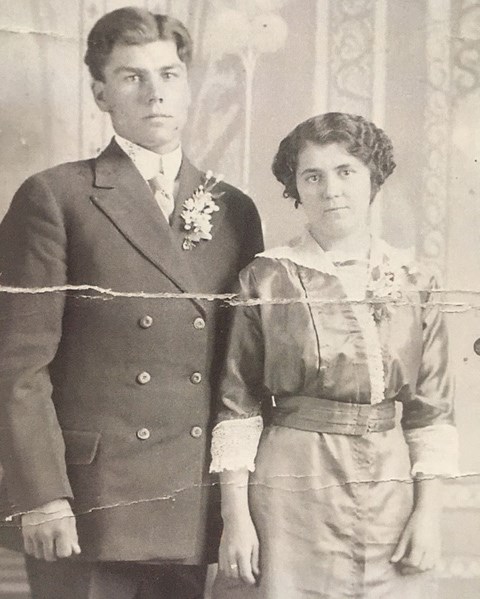There is a long list of topics to research, in the end it is a local family’s story, one that has not only touched many buildings and landscapes in Athabasca, but the community, that was chosen.
While originally writing on the Olson family farm and Kelly and Anna’s history together, it very quickly became clear that the Salé family — Anna’s side — was a history that had to be told. With the family pictures, stories and history so graciously shared and written by Louis Salé himself; a love letter from and to the family began.
Arthur Salez was born in France in 1868 and came to Canada at the age of 16. Arthur came to Canada with his older brother as his brother’s fare had been paid for by a wealthy man in return for work as a servant. After finding out that his brothers' contract was null and void in Canada, a new life for Arthur began.
After spending time in Ontario learning English, he moved out west to Alberta and landed in Athabasca in 1911 where his legacy began. Just the previous winter, he had arrived in the Morinville area from Ontario with only two cows, a few pigs and chickens, and some small horse machinery.
Arthur started his new life on a homestead east of town – in an area that would become known as the Parkhurst School District – and filed for homesteads for his two sons that were still in the Kenora and Lake of the Woods area in Ontario.
One of these sons was Eugene Salé. At 18 years old he moved onto his own piece of land next to his father’s. To earn money, he helped build the Culls drug store, the Brick School, and the United Church.
 St. Gabriel Church in Athabasca before the fire.
St. Gabriel Church in Athabasca before the fire.It was also this year that he met his future bride Anna LaFlamme who was waitressing in a restaurant located in what is now the Real Canadian Dollar Store.
Anna arrived in Athabasca in 1912 on one of the first trains to enter town. This same train would also bring most of the Oklahoma black settlers that would farm the Amber Valley area.
After meeting, Anna and Eugene would begin their long-distance courtship — 40 kilometres by summer horseback or 24 kilometres over the frozen muskeg. In 1915 they were married in St. Gabriel’s Catholic Church.
As Louis explains in his history to his family, Eugene was a very respected and successful farmer. During the 1930s when many people were going hungry, Eugene endured through hard work and a seemingly daring personality.
When the ice on the river was thin and dangerous, he continued to take his chances hauling his sleighs across the ice. As were always his plans, Eugene went into the Sawmill business. Unfortunately, as Louis writes, “it is thought he succumbed to a mental breakdown (no one realized such problems in those days) and died of his own hand in 1941.”
Before his untimely passing, Eugene and Anna’s union produced eight children. One of those was Louis who married Elizabeth Knittle in January 1953.
They were married in the same church as his parents – St Gabriel’s Catholic Church – and were the second to last couple married in that building before a fire destroyed it. They then went south on their honeymoon in a camper built by Louis.
While most campers were not available to the average working-class family at this time, Louis had built his beautiful wife one on the back of a 1952 International half-ton truck. He made sure it had a gas stove, cupboards that became a table, a sink/wash basin and a small bed. They made it all the way to Florida, almost 4,700 km away.
Anna Olson (nee Salé) was born in December the following year and was followed by brother Gene, and sisters Diana, Bernadine and Elise.
Pictures from that time show a loving family lined up for family portraits on couches and in front of Christmas trees. Children with arms slung lazily over the shoulders of their siblings in front of Athabasca poplars. Young parents with beaming smiles in front of buildings that they have outlived. A father with children on his back like a horse is proudly displayed in the family album next to a picture of a mother and her children laughing blindly into the lens which is nothing less than smile inducing.
 Anna Salé and son Louis Salé
Anna Salé and son Louis SaléAnna married her “school time beau” in 1973. Their life as a farming family began that same day. Kelly and Anna have purchased their land and cattle bit by bit since their union. Anna went on and achieved a degree in Early Childhood Education and taught in Athabasca for three years before she and Kelly began their family and Anna dedicated her life to the family farm. In 1981, they were owners of the Landing Ford dealership - now known as Koch Ford. They held the title of owners for 24 years. During this time, they continued their family tree with three children. Graham and Travis continue their careers on Ole Farms. Their daughter Cheryl has numerous roles in the community.
Ole Farms has since grown to include the equivalent of eight full time employees, 1,800 Mama cows and a total of approximately 3,000 head of cattle. This mixed farm has no signs of slowing down and with the family lineage continuing, there are no plans to retire from anyone on Ole Farms.
Every year on the third Monday of February, which is so fittingly Family Day, the Olson’s hold their annual bull sale and welcome the whole community to come out to their farm.
As humble neighbours and friends, being able to reach into their past and share it with people is a great and unexpected gift.
The history of Athabasca is one that is deep and rich, and if the chance ever comes up to hear about a neighbours story, it’s time to pour a cup of coffee and listen.
 The Salé Farm Family Award from 1970.
The Salé Farm Family Award from 1970.



